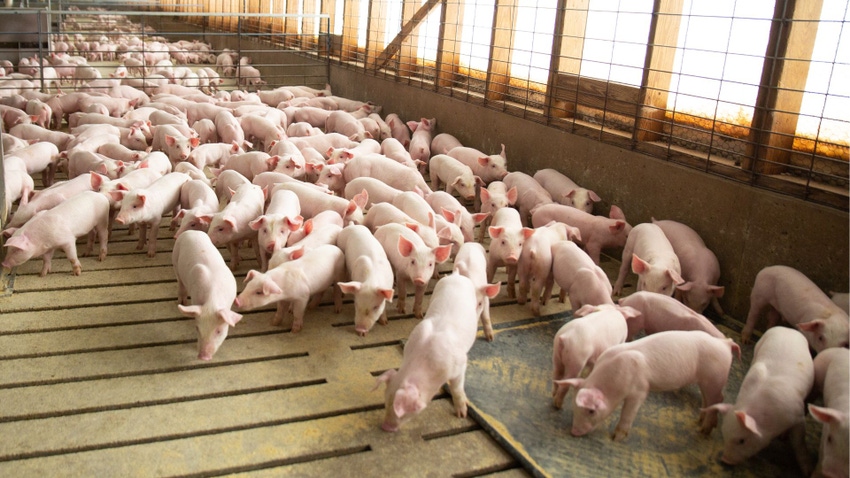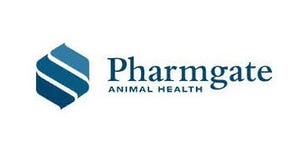Prevent the spread of the most expensive pathogen
How one system reduced PRRS incidence significantly in affected barns.
November 6, 2023

Preventing porcine reproduction and respiratory syndrome (PRRS) is the dream, and it’s becoming possible. There are plenty of reasons to do the work to prevent it, namely that PRRS is uncomfortable for pigs and profit margins.
“In the best-case scenario, you identify a PRRS virus outbreak quickly and reduce the impact on sows, but in the worst-case scenario, your operation experiences significant losses,” says Dr. Katie Coleman, staff veterinarian at Iowa Select Farms. “Managing an infection is often time-consuming and costly, so working proactively to prevent the spread of PRRS is key.”
While at Iowa Select Farms, Dr. Coleman saw PRRS incidences reduced significantly through both remodeling and building new facilities and ensuring pig safety in a swine-density area.
Remodeling for success
The majority of Iowa Select Farms’ sow farms were breaking with PRRS every year, with each break estimated to cost about $1 million annually. Depopulating and repopulating barns can sometimes take more than 40 weeks to eliminate a PRRS infection through herd closure. Iowa Select Farms knew 40 weeks is a substantial amount of time with current market prices and decided to get to the root of the cause.
They began looking at how the PRRS virus entered the barns. They installed positive-pressure air filtration to address the air carrying the virus.
“The amazing thing about positive-pressure air filtration is that it doesn’t require new buildings,” says Dr. Coleman. “We could take advantage of our older facilities by upgrading them with filtration systems.”
Iowa Select Farms’ filtered farms are a mix of remodeled facilities and new buildings, with a large majority being remodeled. For the older barns, remodeling included adding the filtration system and general facility upgrades that also helped prevent the spread of other diseases. The remodeling process takes around six to eight months.
So far, Iowa Select Farms installed filtration systems on 32 sow farms and nine gilt development units. They have seen less than 7% of filtered sites breaking with PRRS. They plan to include filtration systems in all new facilities and will continue investing in remodeling projects to improve existing buildings.
This PRRS prevention strategy gives producers flexibility in their choice of upgrading facilities when they can vs. the exorbitant costs of new facilities.
A hard look at biosecurity
In addition to installing filtration systems, Iowa Select also looked carefully at the culture of biosecurity on their farms, even for employees who work off-farm.
“We have over 1,200 employees, and we understand that they play a big role in biosecurity,” explains Dr. Coleman. “Our goal was to build a culture around biosecurity to help instill its importance in our employees since it’s not always an easy ask.”
Implementing continuous training and technology that helps track movement between sites increased confidence in the farm protocols. The technology helps track where employees have been and returns the appropriate downtime required. Additional testing in higher-risk areas also helps monitor success rates. Employees buy into the protocols because they understand why they’re asked to do things a certain way.
Lessons learned and advice given
Embarking on this operational advancement came with its challenges, and over time, Iowa Select learned what works best for their system and employees.
“Focus on doing core things correctly and in a way that you and your employees really understand, then teach it in ways that make it easily repeatable,” says Dr. Coleman. “Make the right way of doing something the easiest way of doing it.”
There are many options from a facility and technology standpoint that you can adapt to reduce PRRS, Dr. Coleman advises. Make changes that help keep the continued focus on prevention and being proactive with vaccinations.
Remember that it’s not necessary to build new barns to make advancements in PRRS prevention. Consider which sites are in risky areas and will be worth the investment in remodeling or enhancing your existing barns.
If you’re considering a PRRS elimination or vaccination protocol, but aren’t sure where to start, contact the Pharmgate team to learn about Pharmgate's broad portfolio options to support your protocols.
You May Also Like



